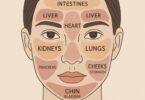Minimally invasive surgery for varicose veins is a thing, and I tried if I might get decent results. Spoiler: OMG.
I was blessed with a healthy bundle of joy in my early twenties, and just as blessed with the first of many little blue veins. As my family grew so did my varicose veins; it became an ongoing condition that I dealt with through my three pregnancies and beyond. Trying support hose and natural remedies to no avail, I went to a doctor for treatment after my third child was born. I was treated with multiple rounds of injections, known as sclerotherapy, which temporarily improved the look and feel of my legs.
Varicose veins are considered genetic and are pretty common, affecting up to 15% of men and 25% of women in the United States. According to science, veins have a series of one-way valves to facilitate the return trip of blood towards the heart. When these valves begin to fail, the blood is allowed to flow backwards, eventually pooling in the legs and causing rope-like varicosities. Left untreated, varicose veins could lead to skin ulcers and blood clots down the line. Not a pretty sight at all, and who wants any of those symptoms?
The blue, veiny condition I was plagued with was advancing remarkably fast for my age and that small vein from my 20’s had grown into multiple achy and unattractive blue and green veins running up and down both legs. The bulging veins had even distorted the look and color of my skin, and at age 35 my legs looked like they belonged to someone else. Luckily, New York has what seems like a million months of winter – but even on hot summer nights I was covered down to my toes. Hearing horror stories about painful vein stripping procedures, I inquired about the possibility of laser surgery. The doctor I saw at the time had explained that even the newest laser surgeries would not be an option for me, given that lasers simply could not bend to accommodate all the twists and turns. Dejected, I took as many vein shot sessions as I could afford them, and enjoyed a little bit of open air until things got worse again.
READ MORE: Modest Swimwear is Popular Again
I was skeptical when I heard about a new treatment for varicose veins using lasers, claiming to be capable of addressing even the most tortuous ones. At my first consultation at NYC Surgical Associates (so happy I didn’t have to travel far), I realized that medicine had finally caught up to my condition. A cardiovascular Surgeon, Dr. David Greuner, had invented the No-Knife Endovenous Laser procedure, using a super thin laser fiber to seal the diseased veins. ‘Diseased’ veins– can you imagine that? I’m too young to be considered ‘diseased’ in any way, shape, or form. The laser fits through a needle that’s no larger than a needle typically used to draw blood. This minimally invasive surgery for varicose veins would mean no incisions, minimal pain and a quick recovery. By utilizing that technology along with a combination of multiple cutting-edge techniques, Dr. Greuner was certain that he could help me.
The answer to my prayers, fortunately in my advanced case, was covered by insurance (if the little ‘bless everything’ emoji was available in wordpress, you better believe you’d be reading it right now). Dr. Greuner and Dr. Arno Rotgans performed a series of treatments, alternating techniques depending on the size and condition of each vein, with some good old sclerotherapy thrown in for the smaller veins. The results were almost immediate. I was pain-free and more comfortable than I had been in years and my legs looked healthy. While I was truly ecstatic with these mind-blowing results, there was always a nagging feeling of uncertainty – why did it get so bad, and how soon will it happen again? The doctors reassured me that we would cross that bridge if and when we come to it, and I went on to enjoy two fabulous summers of short skirts.
This past fall I discovered a faintly noticeable new vein, reminiscent of the dreaded old friends I had tried hard to forget. The new one ran from my ankle all the way up and through my pelvis. Dr. Greuner realized this may be a clue to a lot of my questions. He explained that veins visible that high up on the body could be an indication of faulty veins inside the pelvic region, specifically the ovarian veins. He recommended a venogram using fluoroscopic guidance to determine if this was the case. If so, they were potentially feeding all the veins from that point down, and weakening them further. Dr. Greuner also explained that pelvic pain, or even pressure like I had experienced, typically accompanies this condition and often goes ignored.
On the day of the procedure I was eager to get some answers but also a little tense about being poked and prodded. While I don’t have the highest tolerance for pain, I’m not squeamish and I am fascinated by medicine. I had been awake for most of my vein treatments, but also didn’t mind taking a quick nap for some of the longer ones. The original plan was for me to be sedated for the venogram, but after discussing the procedure with Dr. Greuner and Vascular Surgeon Dr. Elie Semaan, I was offered the option to stay up and watch and jumped at it. I decided I would much rather spend my time watching and listening to what was happening then being unconscious and imagining some Grey’s Anatomy type drama unfolding without me there to weigh in.
Dr. Raghu Idupuganti, an anesthesiologist, explained that he could actually give me just enough sedative to put me out for the few minutes while they were inserting the catheter, explaining the satisfaction of being able to mix the perfect “cocktail” appropriate to each patient and procedure. I opted for just a splash of an intravenous sedative – the right amount to keep me awake yet relaxed during the hour-long session. Other than the mild awkwardness of having a team of people work on you while you’re scantily clothed and slightly loopy, this most recent procedure was a truly fantastic experience. Pop music played throughout, and I enjoyed the irony of listening to Shawn Mendes’ “Stitches” while feeling totally grateful knowing I wouldn’t actually need any. Through a pinhole, Dr. Semaan performed the entire procedure, using x-ray technology to guide the way. By inserting a dye, he saw that the blood was indeed not flowing properly back through the ovarian veins. Dr. Semaan then estimated the size of the vein and inserted foam and a coil to halt the backflow of blood. I also learned that NYC Surgical Associates is the first practice in the New York City area to utilize the Endoluminal Occlusion System, and I was excited to again have access to the most modern medicine available.
It was my own G-rated version of Netflix and chill; fully awake yet able to relax, I watched everything on a monitor. Next thing I knew, the catheter was pulled out and the procedure was done. I sensed nothing more than a bit of pressure ending with a gauze pad on the point of entry. I felt fantastic and ready to jump off the table, only to be reminded that I had to wait – since I did get that perfectly prepared shot of sedation.
So here’s the PSA: pain or pressure in the pelvic area may be a symptom of venous insufficiency, whether you suffer from visible varicose veins or not. Ten percent of people with varicose veins and four to fiver percent of the general population suffers from pelvic congestion, especially those who have had multiple pregnancies. While it’s common to ignore discomfort in our busy lives, the solutions today are so manageable that it makes sense to get symptoms checked before a condition advances. Many seemingly cosmetic conditions can have health implications down the line if left untreated, and nobody has time for that. I’ve recently requested my own set of personalized scrubs (haha, sort of?), as I’m mostly likely in the running for patient of the year. While I adore the awesome team at NYC Surgical Associates, including the front desk and surgical staff whom I’ve gotten to know oh so well, it’s most comforting to know that I’m being treated at a leading practice at the forefront of medical technology. And that I have an endless array of summer skirt options now.











